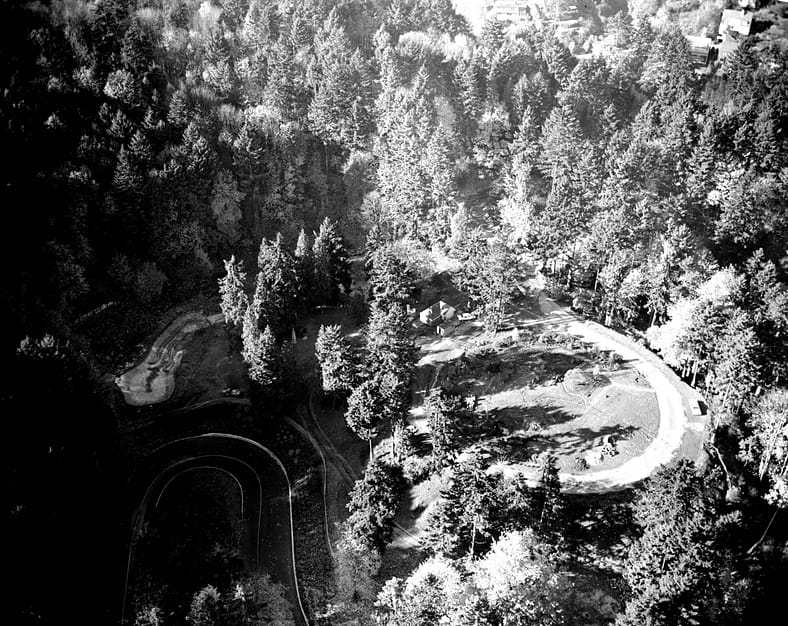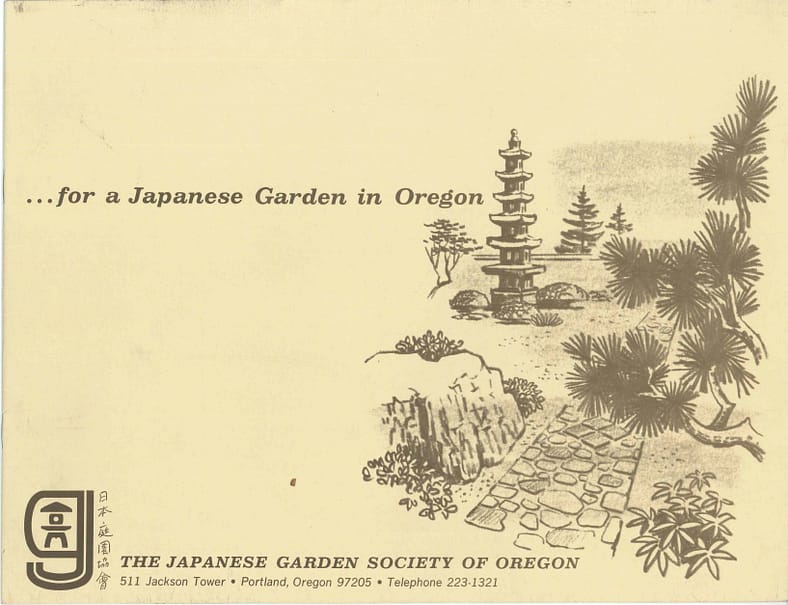
Portland Japanese Garden is a paradox. In sunlight or in fog, when breezes are gentle or when they rush in with fervor, when the trees of summer showcase every spectrum, wavelength, and hue of green or bejewel themselves in the rubies and citrines of autumn, every perspective of the Garden appears to have been laid out by cosmic design, not the hands of humankind. And yet, this meticulous presentation of nature only exists because of the people who shape it and the land they foster is only available to them because of the work of the Portlanders who came before.
Portland Japanese Garden is perched atop a hill in Washington Park, a site that was once the home of the Portland Zoo (now known as the Oregon Zoo). In 1954, the city issued a nearly $4 million bond to finance the Zoo’s new home, about a half-mile southwest of the Garden on the grounds of the former West Hills Golf Course, and in 1959 it opened to great success. The question remained what to do with the land left behind—fortunately, there were idealists who had a vision for what it could become.
The late 1950s had seen a renewed effort to repair the American-Japanese friendship strained by the tragedies of World War II, a bloody and prolonged conflict abroad and the catalyst for inhumane treatment of people of Japanese ancestry across the U.S. It was not a simple matter. While peace treaties had been signed and Issei (first generation immigrants from Japan) and Nisei (second generation) had been released from their concentration camps,* the tensions of war still loomed large in Portland.
However, those of Japanese descent showed great resilience and partnered with their allies to start the long process of reconciliation. One significant milestone in this endeavor was the establishment of the Portland-Sapporo Sister City Friendship in 1959, one of the earlier such relationships forged between a Japanese and American city. The next would come in 1960 from one of the great champions of the creation of Portland Japanese Garden–the Japan Society of Oregon.

On July 29, 1960, during a meeting of Japan Society’s Board of Directors in the York Room at the Benson Hotel, the proposed area of what would eventually become Portland Japanese Garden was outlined. Later in December of that year, Society Board President Don Bates, a local leader who was among those most vociferous in the desire for a Japanese garden, would see his enthusiasm grant the formation of a garden tremendous momentum when he earned the support of Portland Mayor Terry D. Schrunk and Portland Parks Bureau Superintendent Harry Buckley. As reported by author and historian Bruce Taylor Hamilton, Bates shared why he was so eager for the old Portland Zoo to become a Japanese garden:
“Some had visited…gardens on the Pacific Coast and Eastern Seaboard. Not one offered the possibilities for development as did this particular site in Portland. Traditional buildings and the Japanese mastery of the miniature garden vistas presented in this spot a magnificent opportunity for Portland’s citizens.”
It is easy to understand his vision now, but in the 1960s it required some creative thinking. Below the beauty of its Douglas firs, the view was dominated by mud and concrete. Some even thought the idea of it being rescued from this desolation was “hopeless.” In 1961, the City of Portland, recognizing the invaluable contribution such a space could make for Japanese-Oregonian relations and the great serenity and beauty it could provide its populace, decided to lease the land for $1 per year to the organization that would run the Garden. All that was needed was the organization.

One year later, the Portland City Council created the Formal Japanese Garden Commission to oversee the establishment of a Japanese garden. Mayor Schrunk appointed its members from Portland’s robust roster of peace-minded civic leaders, including future Garden Board President Philip Englehart, Japan Society of Oregon President John Fulton, Japanese Ancestral Society President Tom Tamiyasu, and Japanese Consul Katsuma Urabe.
The Commission would then draft by-laws and articles of incorporation, and in 1963 held their very first meeting in the conference room of the Portland Parks Bureau under its new name: the Japanese Garden Society of Oregon, the official name that Portland Japanese Garden retains to this day. Within their first year the Japanese Garden Society formalized what had only previously been an agreement in principle—to retain the services of the Japanese professor the Japan Society had been in touch with a few years prior, Takuma Tono. To see what happened next, one only needs to stroll the Garden.
With 60 years and 12 acres, the enormity of Portland Japanese Garden’s scope and impact may seem too challenging for any one person to accomplish. It is. It required a community effort to build the Garden and it remains a community effort to keep it open. And Portland Japanese Garden always will be open, so long as there are people who understand even a barren and desolate place can be made beautiful and that animosity cannot stand against the power of hope.
*LANGUAGE MATTERS
There is no universal agreement on what we call the camps or the process that created them — ‘incarceration,’ ‘internment,’ and ‘concentration’ are a few of the terms that were interchangeably used. While some might find ‘concentration’ misleading because these were not extermination camps, the term predates the Holocaust and is by definition a place where large numbers of people are detained or confined under armed guard. We believe that awareness of the historical import of these words, as well as care in using them, is an important way to respect the collective memory of the victims and grants us greater power to confront injustice and cultivate peace.
“A concentration camp is a place where people are imprisoned, not because of the crimes they committed, but simply because of who they are. During World War II, America’s concentration camps were clearly distinguishable from Nazi Germany’s. Despite the difference, all had one thing in common: that people in power removed a minority group from the general population and the rest of society let it happen.” – Joint Statement by Japanese-American National Museum and the American Gathering of Jewish Holocaust Survivors at the 1994 exhibition, America’s Concentration Camps: Remembering the Japanese American Experience.